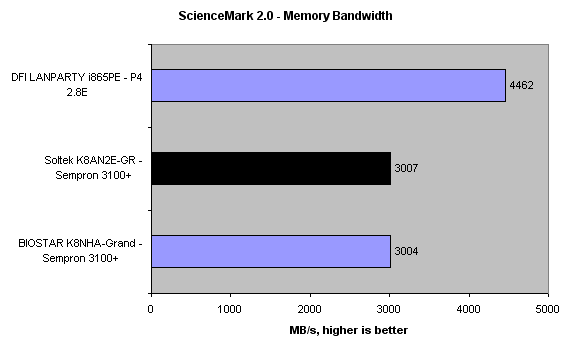ScienceMark 2.0 and Pifast

A look at memory bandwidth highlights the limitations of running with a single-channel architecture. One 64-bit channel with DDR400 support equates to 3.2GB/s of potential bandwidth. Both nForce3 250GB boards manage to hit around 93% of peak efficiency, according to ScienceMark 2.0. That's pretty good going, really. A dual-channel Springdale motherboard, on the other hand, is deemed to be hover around 70% efficiency. An aside, AMD's S939 form factor supports a 128-bit memory interface for, theoretically, double S754's memory bandwidth.

nForce 250GB in S754 form may be short of bandwidth but it certainly shines in latency analysis. That's helped by running the memory controller at full core speed. The test configuration used a single 512MB module of OCZ's excellent Platinum Rev 2 RAM running at 2-2-2-5 timings at DDR400 speeds. The Sempron 3100+ didn't miss a beat, thus showing just how good the CPU's memory controller is.

Excellent performance in Pifast is no surprise. The close proximity between results of rival nForce 250Gb boards is also not surprising in the least. There's far less room for manufacturer-applied motherboard performance-related optimisations with Athlon 64-derived processors. What we can tell from the above graph, however, is that Soltek's board is pretty damn quick.









